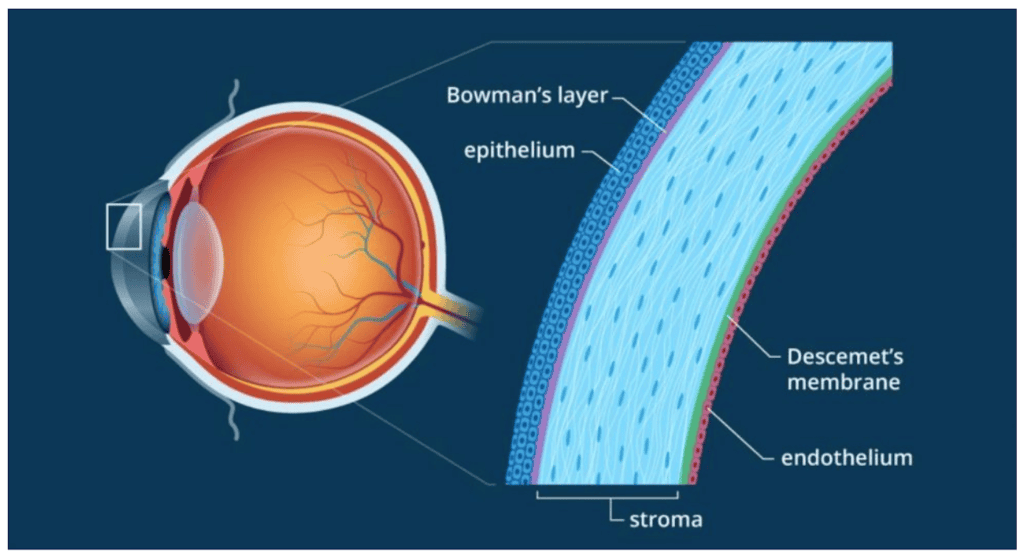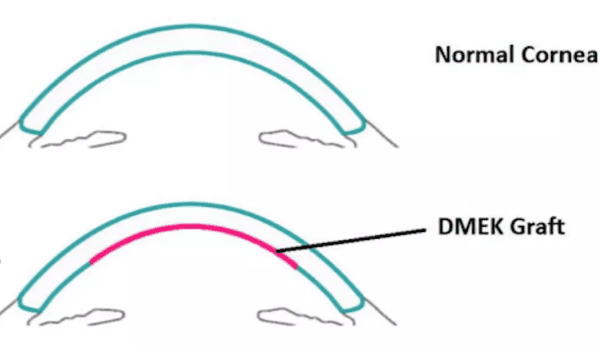The cornea is the curved window at the front of the eye, which focuses the light into your eye. It is in front of the iris (coloured part of your eye). In order to have clear vision, the cornea must be clear and allow the light to pass through. The cornea has many different layers as in the diagram below. The innermost layers are the Descemet’s membrane and the endothelium.

What is Fuch’s Corneal Endothelial Dystrophy (FCED)?
FCED is a corneal condition and affects the Descemet’s membrane and endothelium. It usually develops in patients over 40 years of age and can slowly worsen over time, leading to:
- Decreased sharpness of vision
- Vision that is worse in the mornings and improves as the day progresses
- Glare sensitivity
- Night driving trouble
In the early stages it causes minimal or no symptoms and may be detected by your Optometrist or Ophthalmologist on a routine examination. The cause of FCED is often hereditary but some cases can occur without other affected family members.
Treatments
In the early stages when patients have minimal or no symptoms, the condition is simply monitored by your Optometrist or Ophthalmologist.
For those patients whose FCED is impairing their vision, fortunately there are 2 good surgical options which can improve the vision. Based on our consultation, I will determine the most suitable procedure for you based on your individual condition and requirements.
DMEK (Descemet’s Membrane Endothelial Keratoplasty)
Procedure: DMEK involves removing the damaged endothelial layer of your cornea and replacing it with a thin layer of healthy donor endothelium. This procedure aims to restore the normal functioning of the endothelial cells and improve vision. Benefits:
Faster visual recovery compared to other transplant techniques
Minimal changes in your glasses after surgery Lower chance of transplant rejection compared to other transplant techniques
Risks and Considerations:
Possible complications include graft dislocation, graft detachment, and graft rejection and development of high eye pressure (glaucoma)

DWEK (Descemetorhexis Without Endothelial Keratoplasty)
Procedure: DWEK involves selectively removing the abnormal endothelial cells in the centre of your cornea and applying an eyedrop medication for 2 months after surgery to stimulate the remaining endothelial cells to merge into the centre to replace the removed cells
Benefits:
Minimally invasive technique
Potential to delay or eliminate the need for a corneal transplant
Risks and Considerations:
The response to DWEK may vary among individuals and 10% of patients will still need to have a DMEK in the 3 months after surgery
Slow visual recovery – can take 1-3 months for the vision to recover

